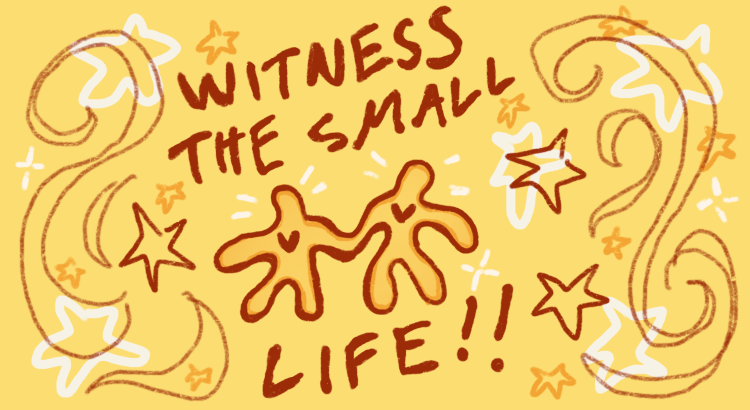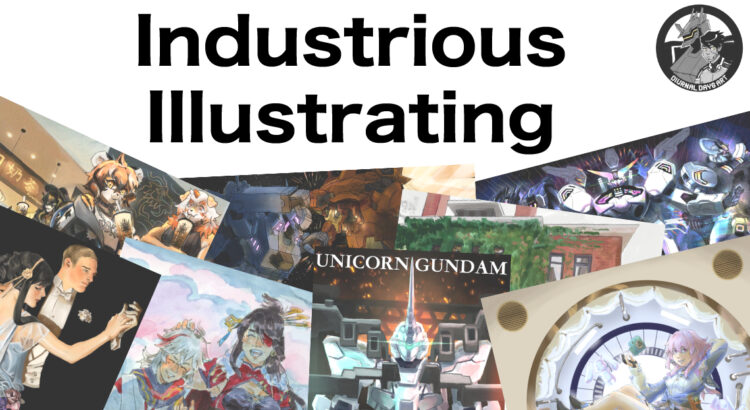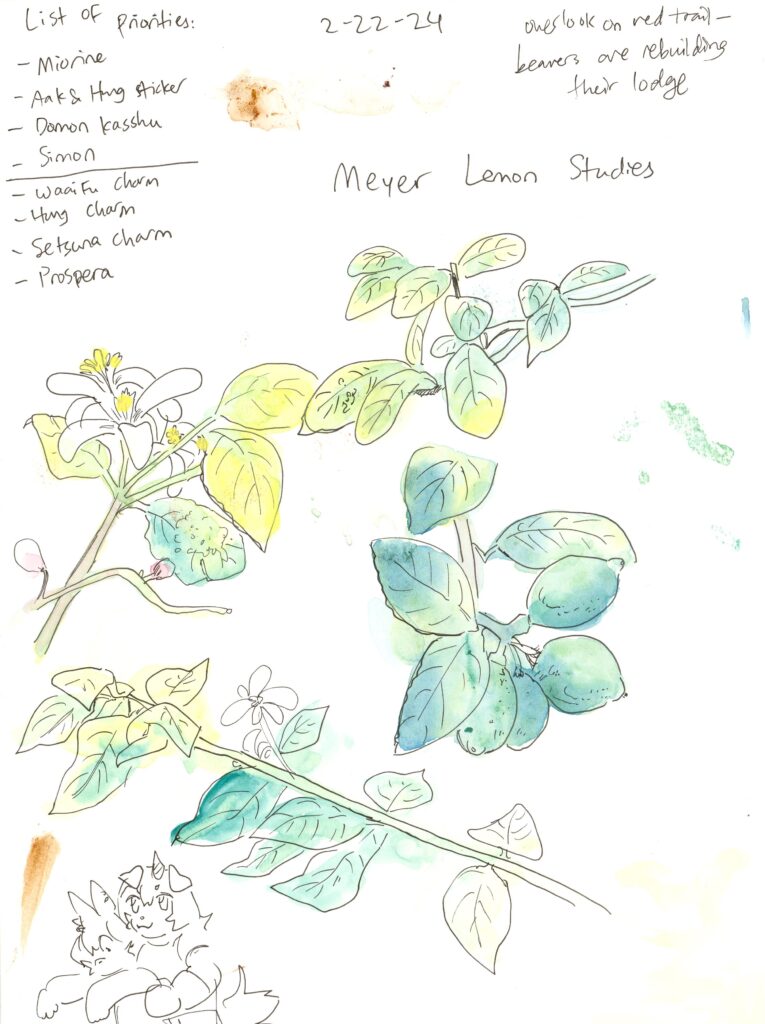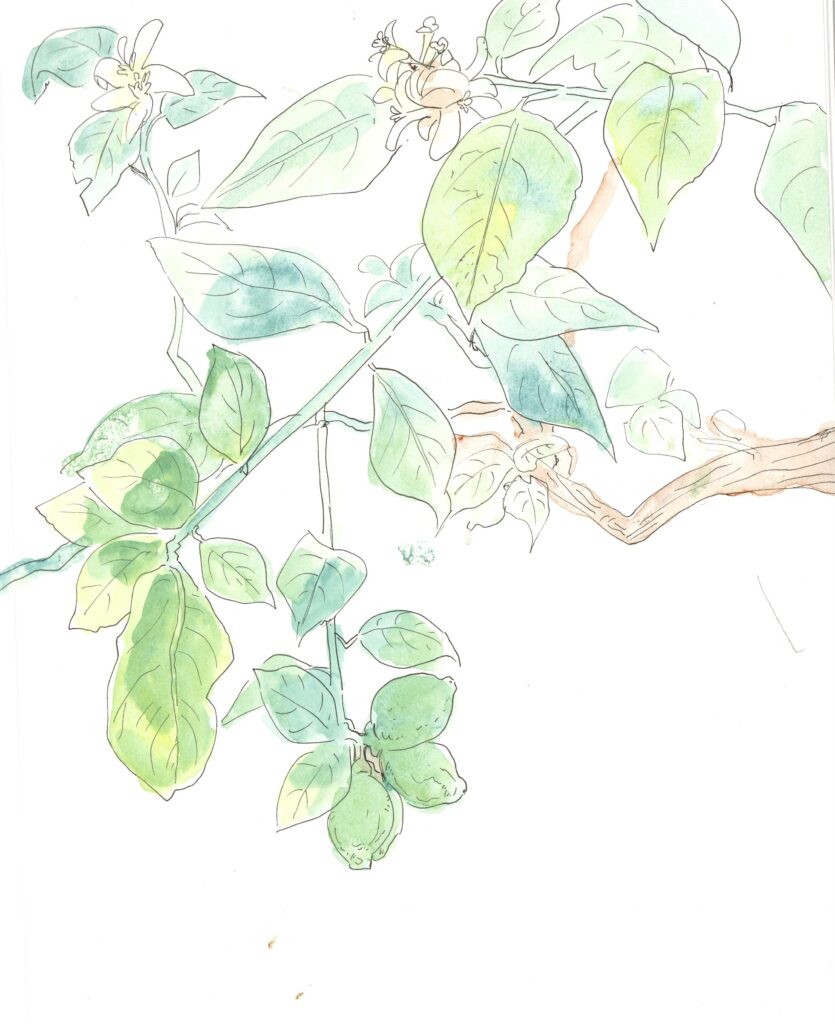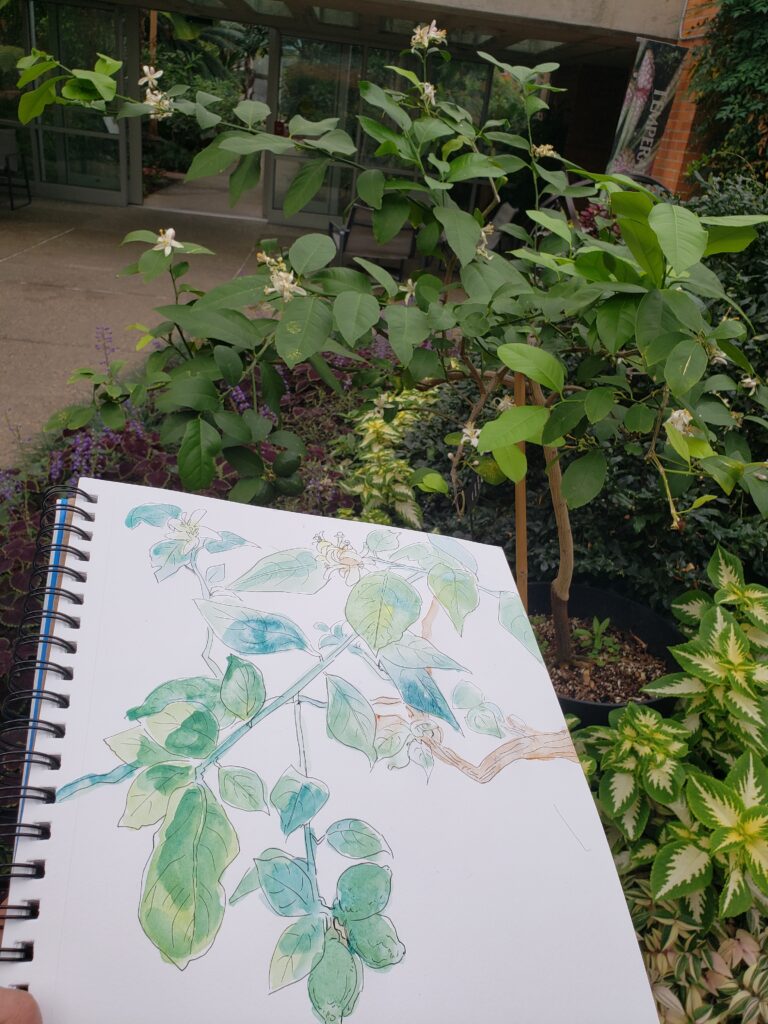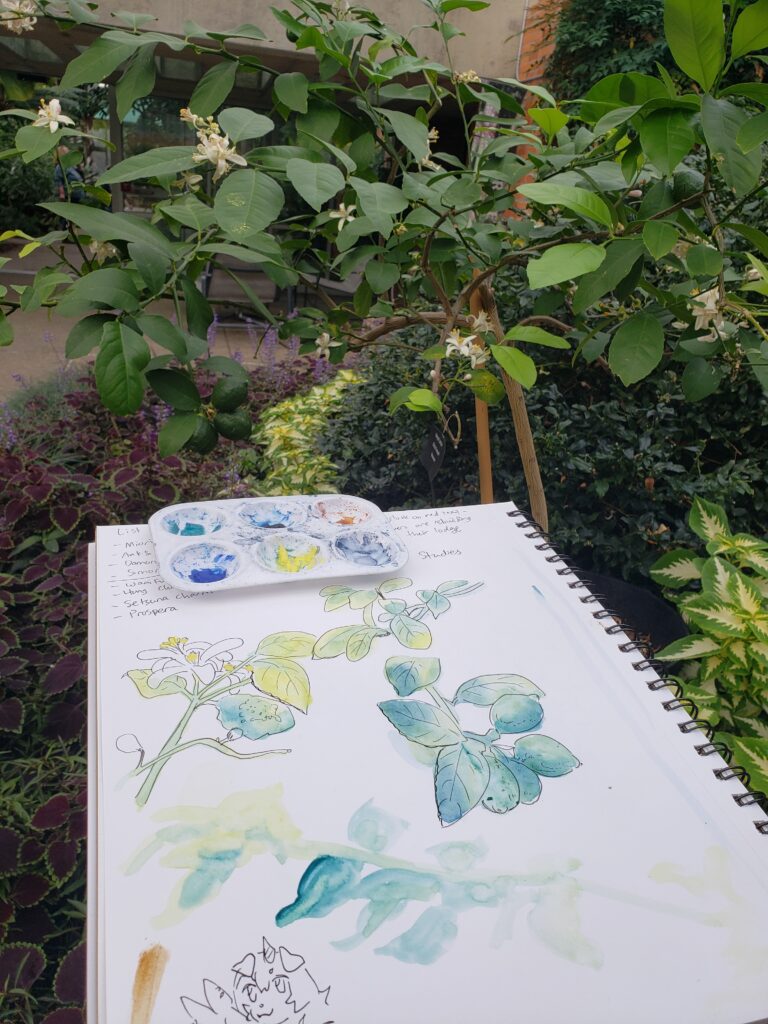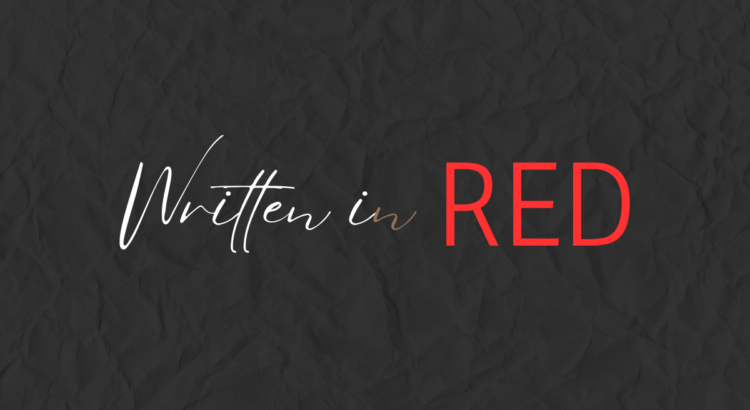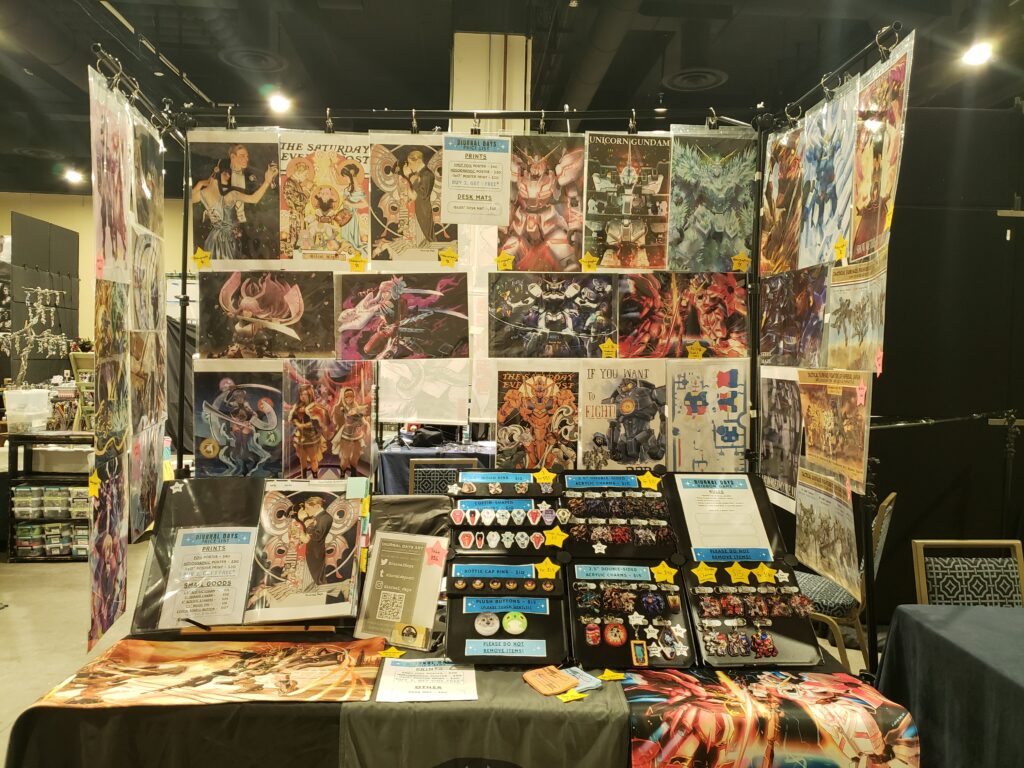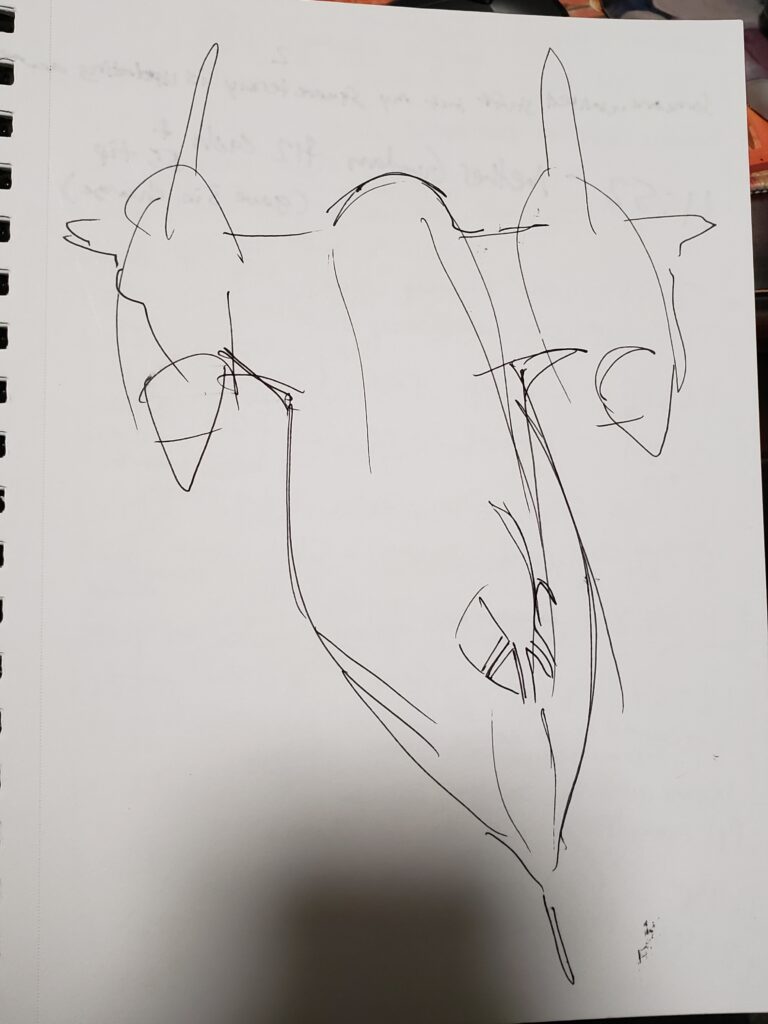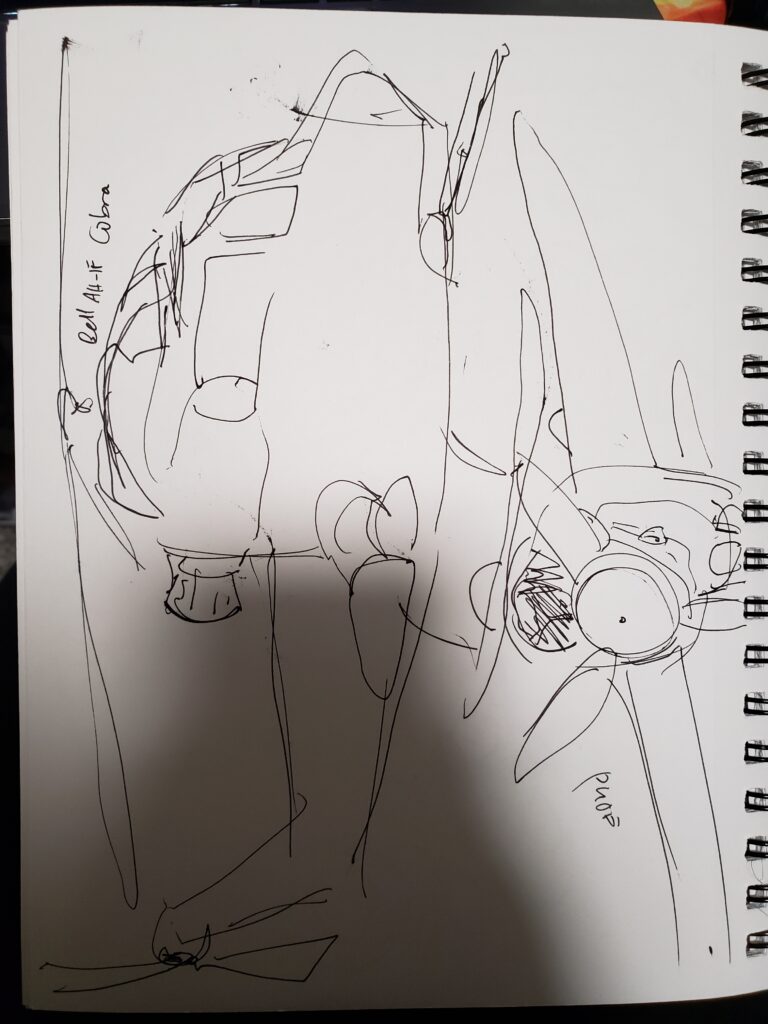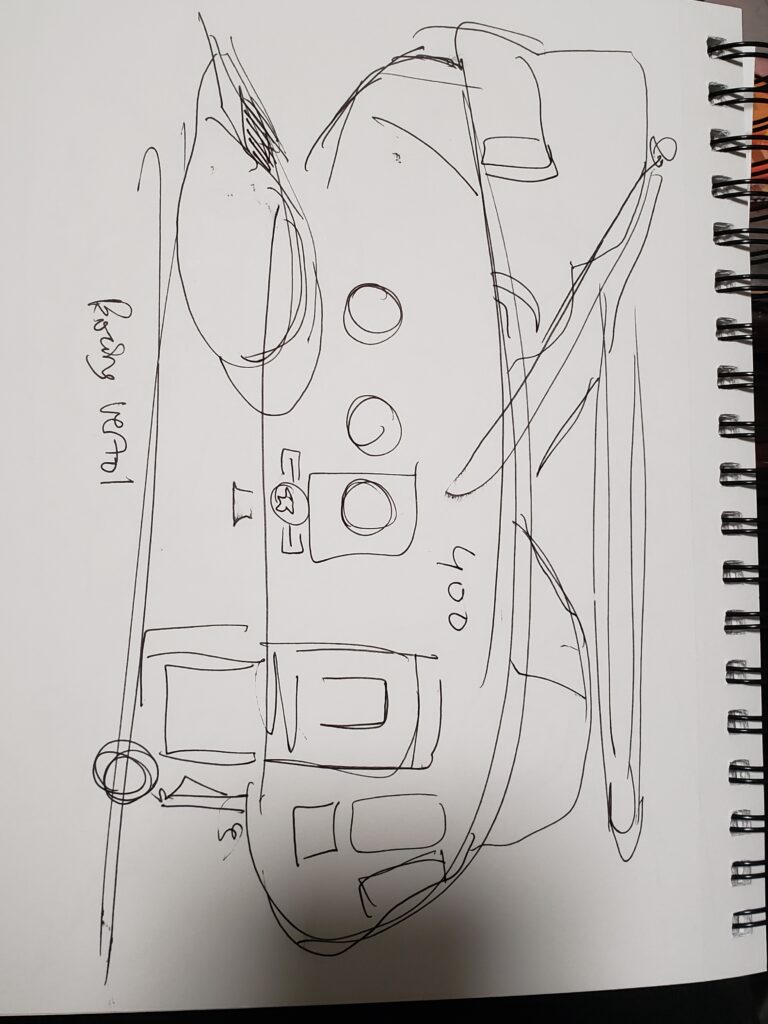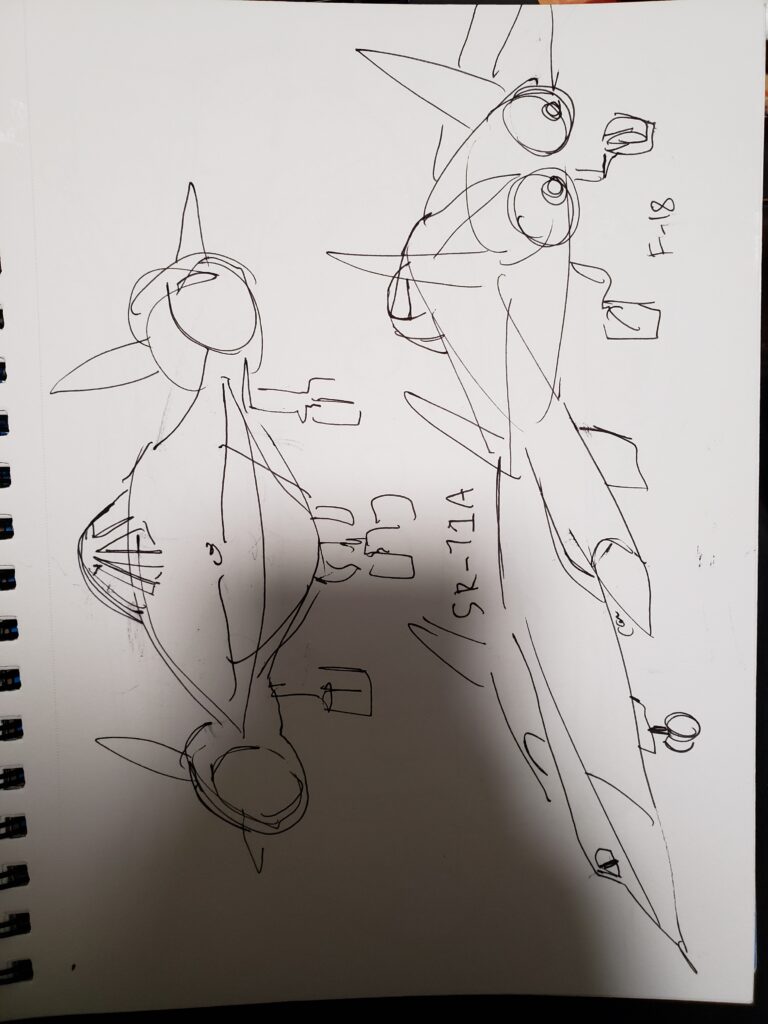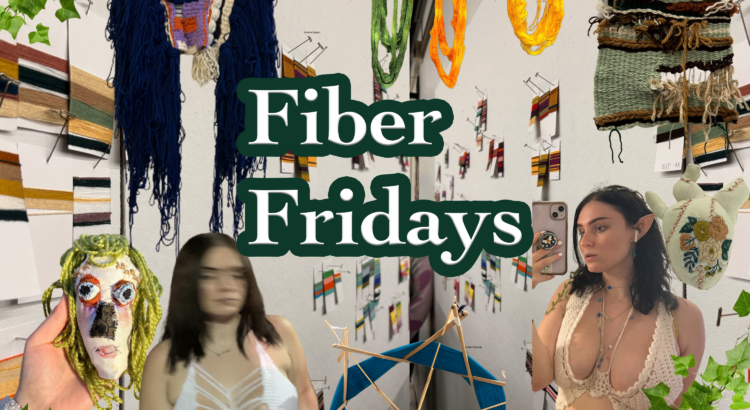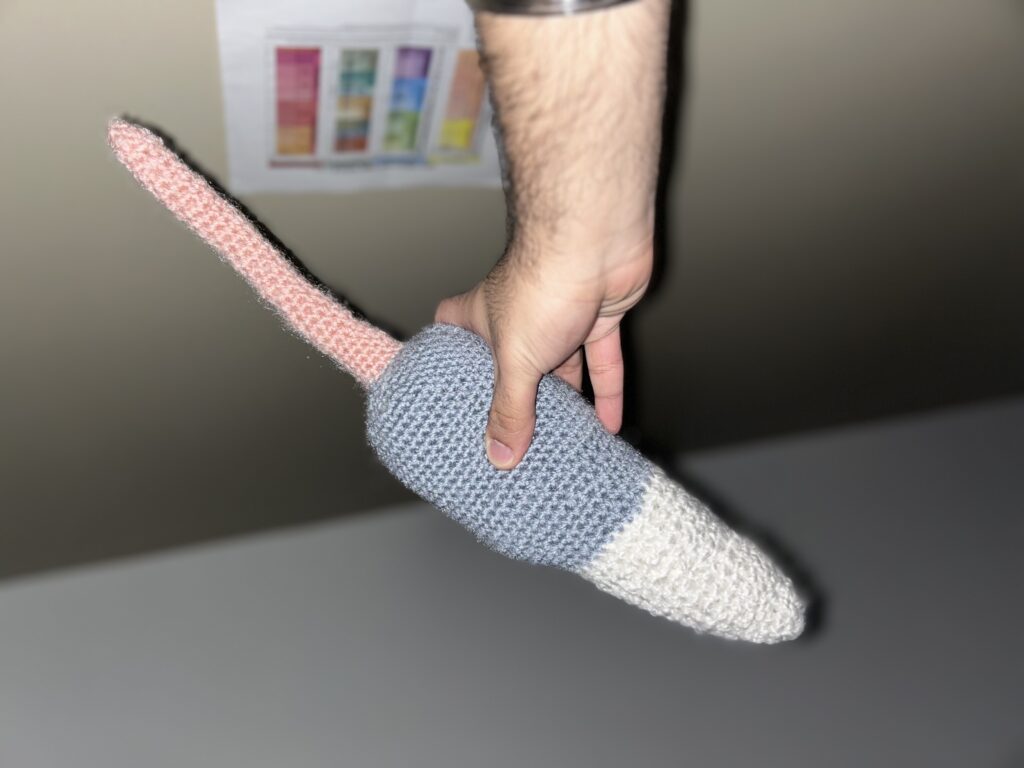Hi everyone! Welcome to my first post for my series Witness the Small Life. Through weekly doodles and photo-collages, I hope to encourage myself and you all to remember to stop, smell the roses, and appreciate the littlest parts of our lives that make them full.
A quick little introduction of me: My name is Mia and I’m currently a freshman studying Art and Design! I was born and raised in Minneapolis, Minnesota but I’m happy I get to call Ann Arbor home now too. Some of my favorite artists include: Basquiat, Norman Rockwell, Julie Mehretu, and Ricardo Levins Morales (also from Minneapolis!). I currently love illustration and printmaking, and I’m hoping to become a teaching artist (or something along those lines) when I graduate. Besides art, I also love to crochet, roller skate, watch really cheesy movies, and listen to pretty much every genre of music under the sun.
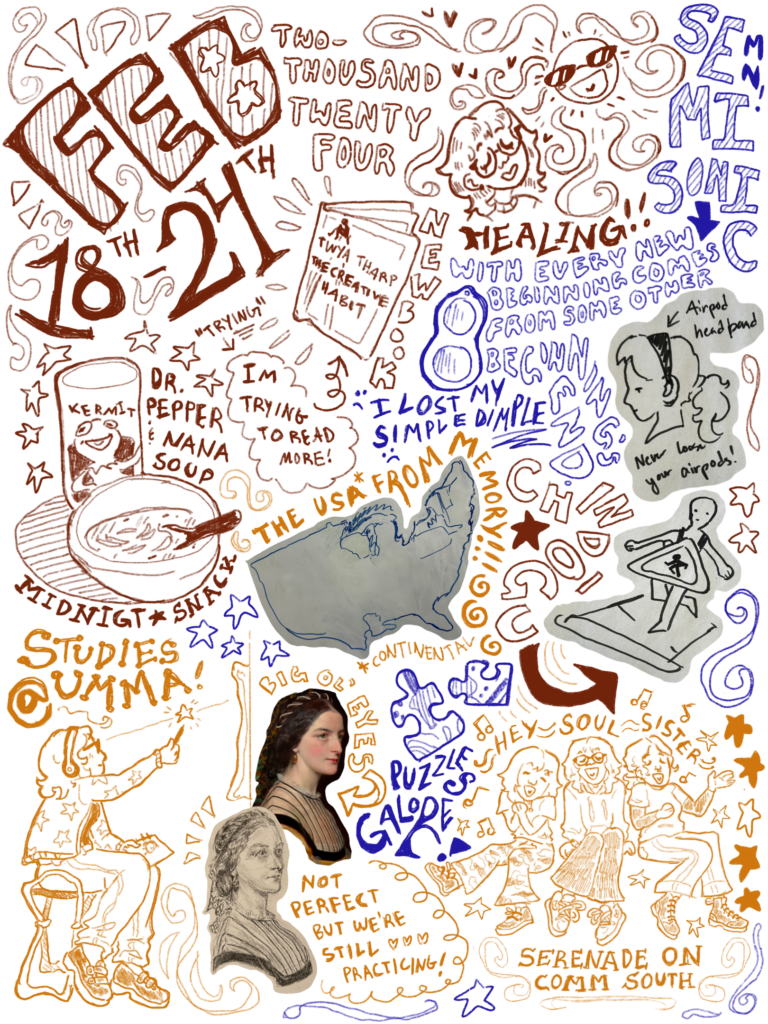
With every drawing I do, I’ll include a little blurb about it/the things that happened within my week. Consider these posts a kind of diary/word salad/thought catcher of sorts. This week was a little bit of a hard one. I’ve been getting super homesick and with a bunch of last minute work right before spring break, everything felt extremely overwhelming. But, I’m lucky to have friends here to pull me out of those difficult moments and spend time singing on buses in the middle of the night with me. This week, I also took time to draw for myself instead of just for class. Keeping a steady art practice is so important! I’m so neglectful of making art for me and not for the sake of others, so even if it’s just a doodle a day it really helps to just do it! Even if everything you make sucks (in theory!) or you feel the imposter syndrome coming on yet again, consistency is key.
I’m a person who has a lot of thoughts, so I hope to share these with you to start our new weeks refreshed and with some words to chew on. I’m a big list fan, so here’s a list of my ins and outs for our upcoming spring break week!
Ins: Singing MORE, taking time to just sit in silence and stare at things, patching up holes, watching more movies on DVD, napping midday with the curtains open, smiling at strangers even if they don’t smile back.
Outs: Letting dirty dishes pile up, wearing too-tight shoes at the wrong times (even if they look super cool), sleeping in my mascara, popping cough drops like they’re candy, forgetting to text people back even if it’s just liking a video they sent.
Have a fantastic spring break and enjoy the small life out there! <3

